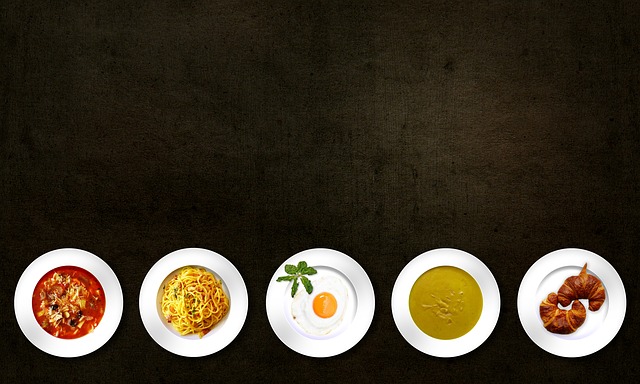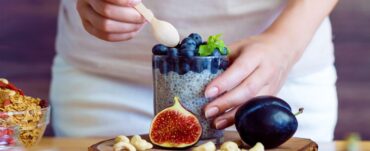Does increasing the variety in your diet lead you to eating more? If you enjoy eating a smorgasbord of different foods each day of the week this could be unintentionally adding cm’s to your waistline.
Firstly you may be thinking that variety is important to get all the nutrients your body needs for health and you are right. The issue may be when you choose many different many different varieties of the same food group over the same day and this many increase your desire to keep eating as your senses do not get bored on the same or similar tastes.
The process is called sensory-specific satiety and is ultimately driven by the variety of taste your mouth experiences. The more variety in the food and drinks you choose the less you will experience this satiety and the more desire you will have to keep eating. Studies have shown this process is not experienced differently in normal or obese people and is something we all need to manage and understand for healthy weight management. The type of tastes which you experience have a role in the amount of sensory satiety you experience, one study reported the effects of sweet and savoury increased feelings of satiety far greater than fat. The selection of foods plays an important role in your ability to say no to more. Some suggestions which may help increase satiety could be:
- Try limiting the saturated or trans fats by selecting lower fat alternatives to foods groups like dairy. Also removing the excess fat and skin in meats which are recommended for health of your heart and cholesterol on top of taking control of the stop button in sensory satiety.
- If you are going to enjoy a ‘sometimes food’ which is higher in fat like chips, sausage roll, meat pie, chocolate, pizza (the list goes on) serve a small amount on a plate first, put the rest away completely before you go and eat the serving you have given yourself to prevent the desire to come back for seconds or thirds.
- When at a buffet this is when self-control and mindfulness needs to be at its best. I suggest drinking some water before you go to make sure you are not thirty as this can cause overeating at any time. Select a single plate for dinner and a single bowl for dessert. If you do find you are still hungry go for an extra serving of salad or cooked vegetables, adding some herbs and spices over salt or gravy.
- Remember the healthy plate model. A quarter of the plate lean meat or alternative, a quarter of the plate whole grain and half the plate vegetable of fruit. This plate model can be used for both meals and snacks and the combination of fibre and protein will help you stay fuller for longer and promote a feeling of fullness.
- Mindfulness is key. Enjoy the time to eat the foods you have selected and through mindfulness and taking your time this may help reduce the influence of the sensory-specific satiety. It takes 10-15 minutes for your brain to process fullness so make sure you give yourself the time to experience this.
Before you completely remove all the fat from your diet in fear of overeating fat are still needed in your body. Fats like monounsaturated and polyunsaturated fats are recommended for health and needed for many functions including production of hormones and absorption of the fat soluble vitamins A, D, E and K. Try using these types of fats in their whole food form like fish which is high in the polyunsaturated fat omega-3 fatty acid. Or add the fat to a complete food such adding a few teaspoons of extra virgin olive oil to your salad or cooked and the fibre in the vegetables will help you to feel full. If you do end up eating a few more vegetables because you enjoy the taste with the olive oil this is no detriment to your health in any means as vegetables are low in energy and high in beneficial antioxidant and phytonutrients.
Take Home Message: It really comes down to mindfulness and meeting the needs of your body by following a healthy plate model for both meals and snacks without over exposing your taste buds to too much variety. Yes eating a range of different foods is important but try selecting these different foods on different days of the week rather than a number of varieties over the same day e.g meatless Monday, turkey Tuesday, Stir fry and lean beef Wednesday etc. The variety from lunch to dinner is important and a great way to reduce waste and be time efficient is to use last night’s leftovers.
References:
- Snoek, H. M., Huntjens, L., van Gemert, L.,J., de Graaf, C., & Weenen, H. (2004). Sensory-specific satiety in obese and normal-weight women. The American Journal of Clinical Nutrition, 80(4), 823-831. Retrieved from https://search.proquest.com/docview/231953173?accountid=34512.
- Sørensen, ,L.B., Møller, P., Flint, A., Martens, M., & Raben, A. (2003). Effect of sensory perception of foods on appetite and food intake: A review of studies on humans. International Journal of Obesity and Related Disorders, 27(10), 1152-1166. doi:http://dx.doi.org/10.1038/sj.ijo.0802391.
- Hetherington, M. M., Cunningham, K., Dye, L., Gibson, E. L., Gregersen, N. T., Halford, J. C. G., . . . Van Trijp, ,H.C.M. (2013). Potential benefits of satiety to the consumer: Scientific considerations. Nutrition Research Reviews, 26(1), 22-38. doi:http://dx.doi.org/10.1017/S0954422413000012.
- Inman, J. J. (2001). The role of sensory-specific satiety in attribute-level variety seeking. Journal of Consumer Research, 28(1), 105-120. Retrieved from https://search.proquest.com/docview/215032687?accountid=34512




